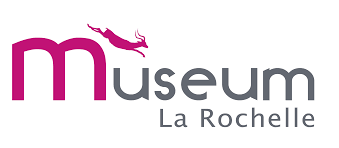
Natural History Museum of La Rochelle
The Herbarium of La Rochelle includes a few historical herbaria (late 18th century - early 19th century) such as the Michel-Simon Goujaud-Bonpland Herbarium, and some classical herbaria (late 19th-20th centuries) like the Louis Raller Herbarium. Plants mostly come from the Poitou-Charentes department and western France.
The Herbarium of La Rochelle is a composite herbarium assembled from donations. In it you can find the herbaria of: Goujaud-Bonpland, de Beaupréau, Faye (author of the Catalogue des plantes vasculaires de la Charente-Inférieure in 1850), Guiguet, André Savatier (cousin of Ludovic Savatier, author, with de RocheBrune, of the Catalogue des phanérogames de la Charente in 1861), Souché (author of the flore du Haut Poitou in 1894), Fouillade and Rallet, plus a small portion of the Foucaud herbarium and the Rochelaise Society Herbarium. The whole herbarium is estimated to harbor between 75,000 and 80,000 pieces. Apart from the Guiguet Herbarium, devoted to the French Alps, those herbaria are mainly regional herbaria, even though several specimens (from Europe and Northern Africa) come from trades and exsiccata.
- Michel-Simon Goujaud-Bonpland (1770-1850)
Michel-Simon is the brother of Aimé Bonpland (1773-1858). After his studies and military service, Aimé went to America with Alexander von Humboldt, while Michel-Simon became a doctor in La Rochelle (1858). Half of the plants were collected within a 60 km radius around La Rochelle, between 1810 and 1830. The herbarium, classified following the order of Systema Vegetabilium (1784) by Linnaeus, contains 5,240 specimens, as well as material collected by Aimé, mainly from Spain and Canarias, with some pieces from South America, of which an isotype of Mutisia grandiflora.
Michel-Simon corresponded and exchanged material with the lead botanists of the period. Thus, material collected by Michel-Simon was quoted in many books of the 19th century: la Flore de France by Lamarck and de Candolle (1805 and 1815), Flora Gallica by Loiseleur Deslongchamps (1807 and 1828), Botanicon gallicum by Duby (1830), la flore française by Mutel (1837). In 1801, Willdenow described Polypogon maritimus from seeds given by Michel-Simon.
- Julien Foucaud (1847-1904)
Julien Foucaud is mainly known for his collaboration to the Flore de France by Rouy (1893-1896). This herbarium solely contains 1,485 pieces, and every plant were collected in the Poitou-Charentes department between 1873 and 1876. This herbarium was almost certainly the reference used for the Catalogue des plantes vasculaires de la Charente-Inférieure (1878), as well as the botanical map associated with it.
- The Rochelaise Society
The Rochelaise Society (for the exchanges of French plants) was founded in march 1878. It remained active until the death of Julien Foucaud. The number of members varied between 32 and 50. Each member was expected to provide, each year, 5 pieces in as many copies as there was members. In return, they each received copies of the various pieces, an annual catalogue of the distributed plants, and an annual bulletin. The Society distributed a total of 5,879 specimens.
This Herbarium of the Rochelaise Society contains more than 100 types, mostly described in the Society bulletin. Despite the confidential circulation (a little over 50 copies a priori), this newsletter remains a valid botanical publication. Although most of these types concerned non-essential varieties or hybrids, two still valid species were described in the bulletin:* Oenanthe foucaudii* Tess. and Taraxacum adamii Claire.
- Louis Rallet (1897-1969)
This Herbarium contains more than 27,000 pieces, and is nowadays the most significant collection in La Rochelle. Plants mostly come from the Centre department, and from Central-Western France.

The Natural History Museum seen from the Garden of Plants © Muséum d'Histoire Naturelle de la Rochelle

Julien Foucaud Herbarium, Delphinium consolida L. © Muséum d'Histoire Naturelle de la Rochelle - Guillaume Baron

Herbarium of the Rochelaise Society, Taraxacum adamii Claire © Muséum d'Histoire Naturelle de la Rochelle - Guillaume Baron